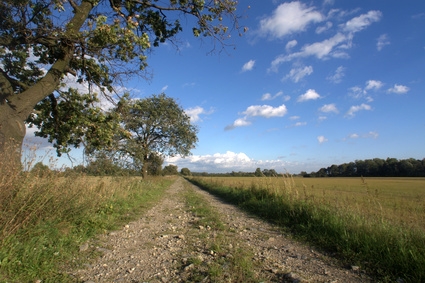
The MacPherson struts transfer all the weight of your Saturn L200 to the wheels. If you have noticed oil dripping from either strut, you will need to replace it. Defective struts can cause noise, pull, wandering and hard steering. It's best to replace both struts when performing this type of repair. Unless specified, you can use your socket wrench set or your box wrenches, or switch around, depending on which works best for you during the repair. Use your torque wrench where noted.
Raise your L200, support the front end with jack stands and remove the wheels.
Unbolt and disconnect the stabilizer bar from the strut on one side of the car and remove the brake hose and the ABS harness from the strut brake hose bracket.
Mark where the strut and the steering knuckle connect.
Loosen and remove the strut/knuckle nuts. Removing the bolts may take a few tries with your hammer and punch. In some cases, you may need to use a lump hammer to break the bolts free.
Locate the mounting nut under the hood. You'll need two box wrenches to support the strut rod and for removing the upper mounting nut.
Remove the strut from the steering knuckle. Try not to extend the half shaft that connects to the knuckle. Firmly grasp the knuckle while removing the strut assembly from the fender well.
Repeat steps 2 to 6 for the other strut assembly.
Secure the strut's clevis bracket at the bottom with a vise, using rags to avoid damaging it.
Install the spring compressor on the spring per the manufacturer's instructions and lower the spring away from the upper spring seat.
Unscrew and remove the shaft nut while holding onto the strut shaft, .
Remove the upper mounting and check its rubber portion for cracks and wear that would indicate a need for replacement. Repeat for the upper spring seat and its rubber bump stop underneath. Check the bearing -- if it doesn't spin freely, replace it.
Remove the spring. Extend the rod all the way on the new strut and install the rubber bump stop.
Place the compressed coil spring upon the lower seat of the strut, against the raised stop (tab).
Attach the upper spring seat and upper mounting. Install the shaft nut and tighten it to 40 foot-pounds with your torque wrench. Slowly release the spring.
Repeat this section for the other strut assembly.
Place the assembly back up through the fender well, exposing the mounting stud on the top side of the shock tower. Get assistance to hold the assembly as you install and torque the new mounting nut to 40 foot-pounds.
Install the steering knuckle into the clevis bracket and insert the two bolts and nuts. Align your marks and torque the nuts to 66 foot-pounds.
Follow steps 1 and 2 of Section One in reverse -- torque the stabilizer bar's link nuts to 48 foot-pounds and its bracket bolts to 15 foot-pounds.
Repeat for the other strut assembly. Have the front wheel alignment inspected and/or adjusted when the wheels are back on and the car is lowered.